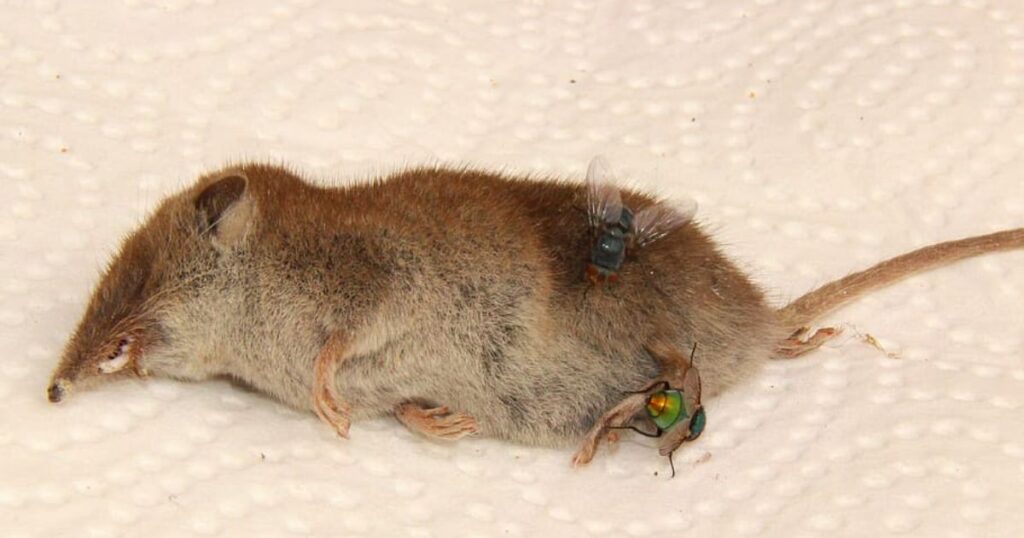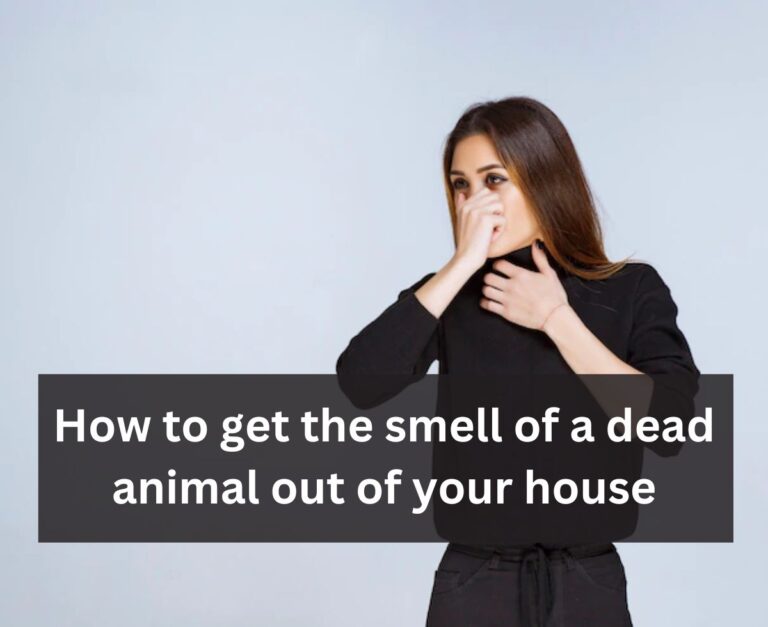Will Lime Get Rid of Dead Animal Smell Completely? (Complete Guide)
Getting rid of a dead animal smell is always a challenge no matter where it is – be it in the house, attic, basement, or on your lawn. You will have difficulty dealing with this unpleasant smell unless you have an effective deodorant.
On that note, will lime get rid of dead animal smell? Yes, lime can get rid of a dead animal smell. It’s quite effective because it helps neutralize acids and accelerate decay, especially when applied directly to remains. By releasing alkaline calcium hydroxide, lime helps break down foul-smelling compounds while speeding up the natural decomposition process.
Remember, to eliminate the dreadful dead animal smell, you have to apply it promptly to relatively fresh remains, which may require repeated treatments or supplemental methods for severe or long-lasting odors. Read on to learn how it works and how to apply it.
Will Lime Get Rid of Dead Animal Smell?
Yes. Lime, or calcium hydroxide, is a natural mineral compound that can help eliminate foul odors caused by dead animal remains. When applied properly, lime works by neutralizing acids and speeding up the decay process to break down odor-causing compounds. It’s environmentally benign, non-toxic, and eco-friendly. It is an inexpensive, eco-friendly deodorant. What makes lime effective at getting rid of a dead animal smell?

Lime has various attributes that help it work its magic in reducing and eliminating a dead animal smell. When you cover a dead animal with lime, it will work its magic by:
1. Raising the pH to Alkaline Levels
Lime has a high pH of 12-13, which helps neutralize acidic odorous compounds like hydrogen sulfide, which is responsible for rotten smells. The elevated pH also creates conditions unsuitable for the growth of odor-causing bacteria that break down dead tissues.
2. Lime Kill Odors By Chemically Binding Smelly Compounds
Lime not only raises pH levels but also releases free calcium ions. These ions actively bind with foul-smelling sulfur compounds like hydrogen sulfide and organic mercaptans, forming complexes that effectively neutralize biological waste odors. So, does lime cover dead animal smell? No! Rather than simply masking odors, lime works to chemically break down and eliminate them.
3. Does Lime Help Decompose Dead Animals?
Lime speeds up the decay of dead organic matter by increasing pH, releasing calcium ions, and producing heat. This faster breakdown of tissues reduces the time odorous decomposition byproducts can be released. Accelerated decay eliminates smells at the source.
4. Disinfecting and sanitizing
The high alkalinity and ability to dry out waste give lime strong disinfecting power against odor-causing bacteria. When applied to smelly organic remains, lime helps sanitize the area by destroying bacteria and decontaminating the waste, eliminating odors. It continues controlling odors even after application due to the slow release of alkalinity and trapped smells over time. It maintains disinfecting ability and can eliminate odors for a long period through residual chemical activity and altered conditions unsuitable for odor production and escape.
How Do You Apply Lime to Get Rid of Dead Animal Odor
Earlier, I mentioned you must promptly apply lime for it to work. Here are some tips for applying lime to reduce dead animal smells:
Step 1: Selecting and Procuring Lime
Choose high-calcium lime, also known as calcium hydroxide. Calcium carbonate lime is less effective. Lime comes in powder, pellet, or slurry forms. Powder or pellets must usually be mixed with a liquid before use. Lime is available at hardware stores, pool supply stores, and farm supply stores, and it can be ordered online.
Step 2: Preparing the Lime to Get Rid of Dead Animal Smell
Mix the lime powder with sawdust, clay, sand, charcoal, or kitty litter to help it adhere better before applying. Aim for a crumbly, dough-like consistency. Make a lime slurry/suspension by mixing 1 part lime powder with 2-4 parts water until smooth. This allows for easier spreading. Allow any lime mixtures to sit for a few minutes before applying so the lime can start reacting to neutralize odors.
Step 3: Proper Application
Apply lime directly and immediately to the animal remains and any adjacent contaminated areas. Spread lime as thoroughly as possible over and around the remains, including fur, body cavities, and any ruptures/tears in the tissue. Use a broadcast spreader or spread by hand, wearing proper protective gear. Apply in layers, waiting for each application to dry in between layers. Multiple thin layers are more effective than one thick layer.
Step 4: Reapplication and Maintenance
Check application areas regularly and reapply lime after rain, disturbance, or if odors start to return. Reapply every few days at a minimum, especially for larger or more decayed remains. Scatter fresh lime over areas where lime has clumped together or become less powdery. Apply lime to any porous surfaces under or surrounding the remains, as odors can seep in. Lime’s effectiveness will decrease over time as it reacts and can wash away. Periodic reapplication is typically needed, even with minimal odor.
What are the safety precautions to take when applying lime:
- Always wear gloves, long sleeves, pants, boots, and eye protection when handling and applying lime.
- Use lime in controlled areas away from children and pets when possible.
- Wash any exposed skin thoroughly after applying lime.
- While lime is non-toxic, the remains it is applied to may be contaminated or infectious – take appropriate precautions.
How Often Should You Apply Lime to Get Rid of Dead Animal Smell?
The frequency of lime application needed to eliminate dead animal smells depends on several factors:
- Strength and persistence of odors: Stronger and more persistent odors will require more frequent application of lime to get rid of smells fully. Odors that have been present for a long time may need repeated treatments.
- The volume of waste material: More lime will be needed to treat larger volumes of smelly waste, requiring additional applications. Lime acts by altering conditions around the waste, so it must come in contact with all odorous materials and surroundings.
- Environmental factors: Extreme weather conditions can impact how often lime needs to be reapplied. Heavy rain may wash away lime, requiring reapplication to maintain good odor control. Drier weather allows lime to work longer before needing reapplication.
- Surface area: Lime must coat all surfaces where smells are present, including surfaces surrounding waste sources. Porous or uneven surfaces provide more opportunities for odors to escape and linger, needing more lime application.
- Residual effects: While lime continues working for an extended period, its effects are not permanent and odors may eventually escape without reapplication. Monitoring the area for smells will determine when lime needs to be applied again.
- Presence of decay: As dead remains fully decompose after lime treatment, additional lime may be needed to control odors from the decay process, especially for larger volumes. Lime application during decay ensures the complete elimination of smells throughout the entire waste elimination cycle.
A General Guideline for Lime Application:
- For strong odors from large volumes of waste, reapply lime every 1-2 weeks until there are no detectable odors.
- For persistent odors, reapply lime every 3-4 weeks to maintain odor control.
- In extreme weather, reapply lime within 1 week after rain to ensure effectiveness.
- Monitor treatment areas for odors periodically and reapply lime as needed until all smells have been eliminated.
- During the decay of remains after initial treatment, reapply lime every 2-4 weeks to fully eliminate odors throughout the entire waste elimination process.
- For small volumes of odor from recently deceased remains, a single application of lime may be sufficient with prompt and consistent treatment. Reapply only if odors start escaping to ensure over-treatment does not occur.
Frequently Asked Questions (FAQs)
Will a dead animal eventually stop smelling?
Yes, a dead animal’s remains will eventually stop smelling. Over time, a dead animal’s body will decompose, and the odor will fade. As the flesh and organs break down, there are fewer compounds left to produce smells. Natural weathering and the elements break down the remains further.
How long does it take for the smell of dead animals to go away?
The smell of a dead rat can linger for 6-10 weeks as it decays, while flies and maggots emerge to make the stench even fouler. Though time fades the odor, echoes may remain for months more.
Can dead animal smell cause any health problems?
Exposure to the stench of decaying animals can potentially lead to health problems in humans and pets. The foul odors are caused by toxic gases and bacteria released as the remains decompose. While occasional exposure is unlikely to cause serious harm, prolonged or repeated inhalation of these smells may lead to issues like nausea, dizziness, and respiratory illness.
Conclusion
Will lime get rid of dead animal smell? Lime effectively reduces dead animal odors because it helps neutralize acids and accelerate decay, especially when applied directly to remains. By releasing alkaline calcium hydroxide, lime helps break down foul-smelling compounds while speeding up the natural decomposition process. Continual monitoring and timely reapplication of lime is the key to eliminating even stubborn dead animal odors in an eco-friendly and cost-effective manner. With consistent effort, lime can fully resolve any smell issues from remains or waste.
Have you ever used lime to get rid of other smells? Did it work? Let us know in the comments.







